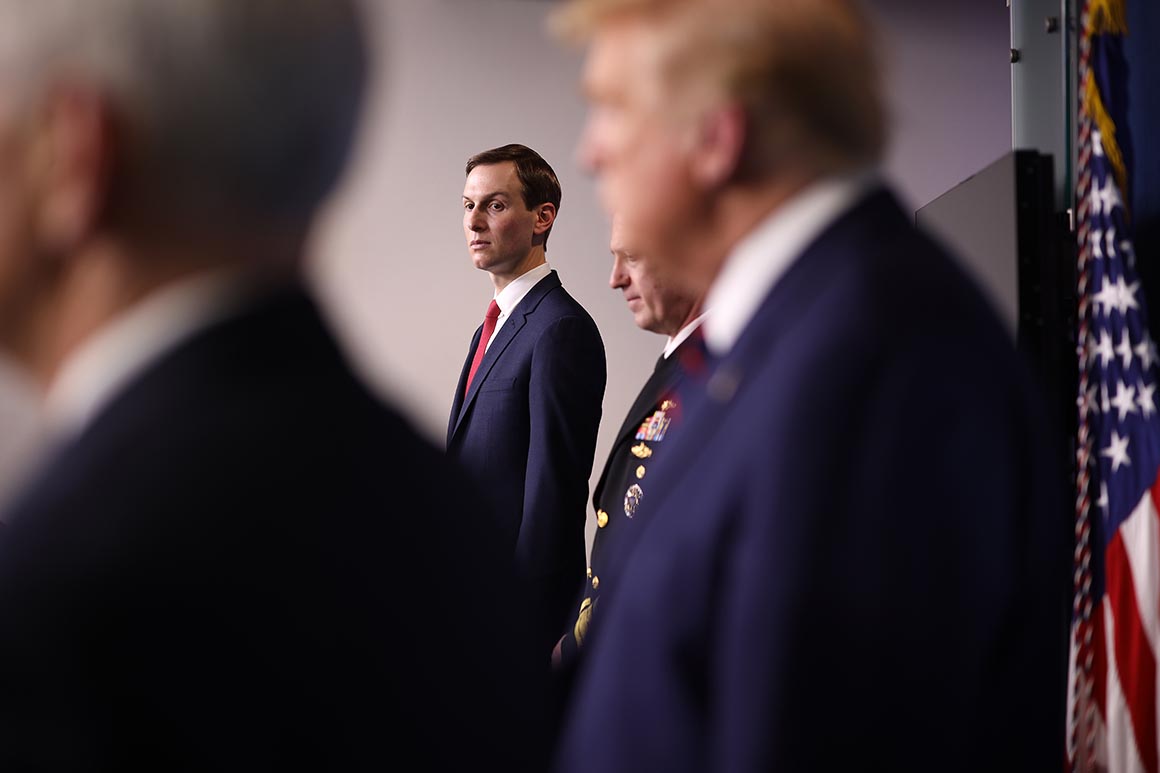
The White House declined to comment in response to detailed inquiries on Tuesday, but spokesman Avi Berkowitz said in a late Tuesday night statement after this article was published: „This story makes no sense and is completely false. The White House gets many unsolicited random proposals on a variety of topics, but Jared has no knowledge of this proposal or the people mentioned in this article who may have submitted it.“
The creation of a national coronavirus database could help the nation get out in front of the fast-spreading virus, which officials anticipate will strain the health care systems of nearly every major city over the next few months and threaten to recur in pockets of the nation for some time after that.
Yet concerns about data sharing and patient privacy aren’t the only obstacles to the plan — which was described by people familiar with it as one of a series of out-of-the-box initiatives sought by Kushner’s team. That team is composed of a range of federal officials, friends and leaders from the private sector seeking to promote innovative responses to the coronavirus crisis.
The notion of a national surveillance network has also faced resistance internally from some health officials, who argue that the federal government should only go as far as setting broad standards for disease and resource tracking and leave it to individual states to stand up their own surveillance networks, according to two individuals with knowledge of the discussions.
Other officials contend that the administration should build any new monitoring system on its own, without the private sector’s involvement – a position that’s gained steam following a series of articles about Kushner’s team and its involvement of private companies and executives in efforts to fix problems dogging the nationwide response, according two people briefed on the matter.
Some public health experts, meanwhile, suggested that the administration might instead built out and reorient an existing surveillance system housed within the Centers for Disease Control and Prevention that aided the response to prior epidemics. The system, called the National Syndromic Surveillance Program, is a voluntary collaboration between the CDC and various state and local health departments that draws data from more than 4,000 health care facilities.
“In an emergency, what works best is scaling up existing robust systems, not trying to create a new system,” said former CDC Director Tom Frieden. “Use the systems you have.”
A Health and Human Services spokesperson said the department does not comment on internal deliberations.
Still, Kushner’s teams has remained enthusiastic about the idea of a national surveillance system, which they see as a way to better understand how the virus is progressing throughout the country and where resources are needed amid severe shortages of protective gear and medical supplies.
Kushner, along with other administration officials including President Donald Trump, have questioned in recent weeks whether governors actually need the equipment that they’re seeking from the federal government’s Strategic National Stockpile.
“The goal here is not to have ventilators sitting in a warehouse where you have another state where you have people who need them,” Kushner said during a press briefing last week. “So, what we’re trying to do is make informed, data-driven decisions.”
The administration’s slow ramp-up of testing, meanwhile, has made it difficult for states to trace the virus’ spread within their own borders – forcing hospitals to empty their facilities in anticipation of a wave of coronavirus patients that may not come for weeks. The testing that is being done has been hampered by backlogs in processing the results, public health experts say, meaning official case counts could be weeks behind the reality on the ground.
“What we’re seeing in the numbers is actually a two-to-three-week echo,” Jeremy Konyndyk, a senior policy fellow at the Center for Global Development and former Obama-era foreign aid official, said in late March. “We still mostly can’t see the enemy.”
Source: politico.com
See more here: news365.stream






